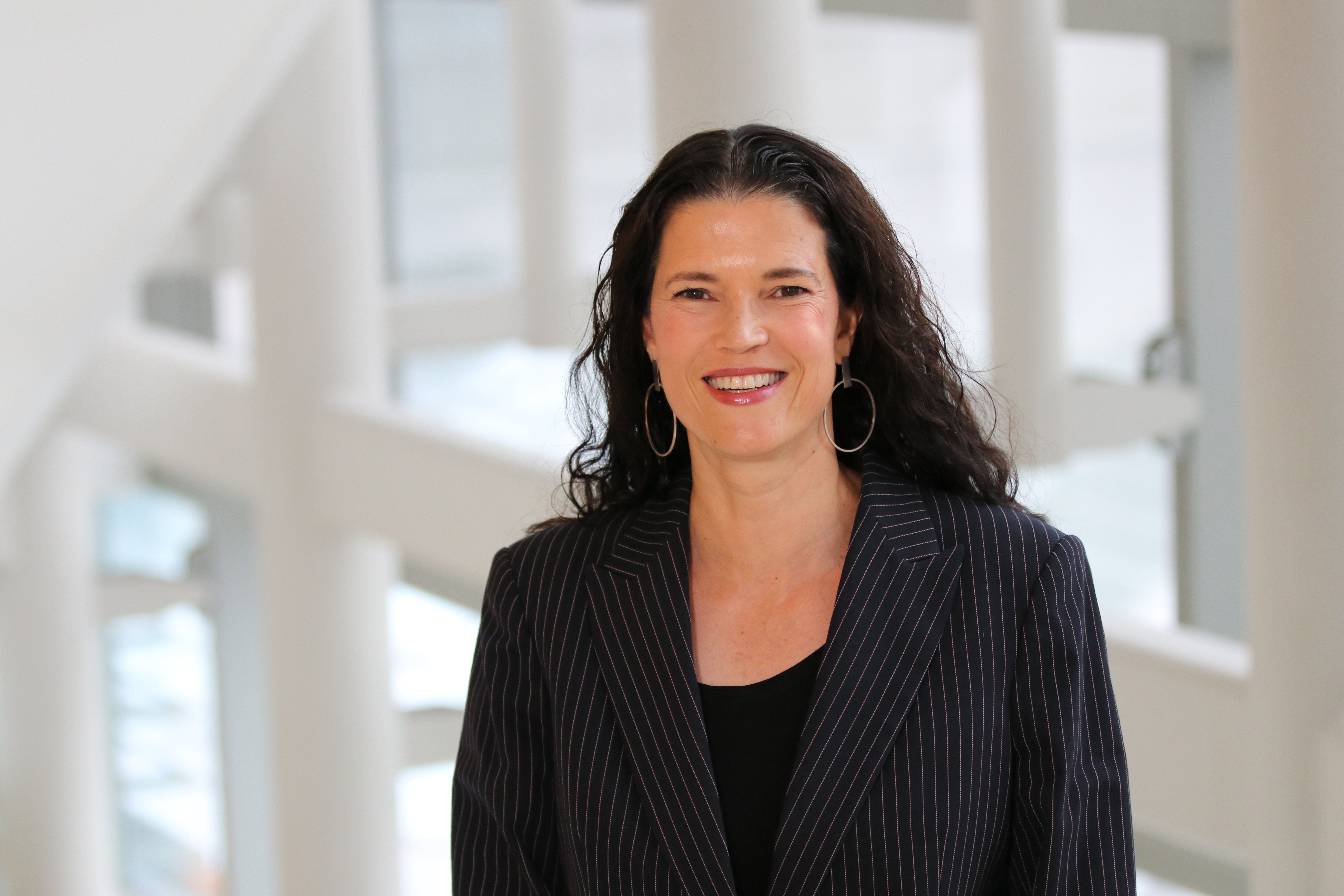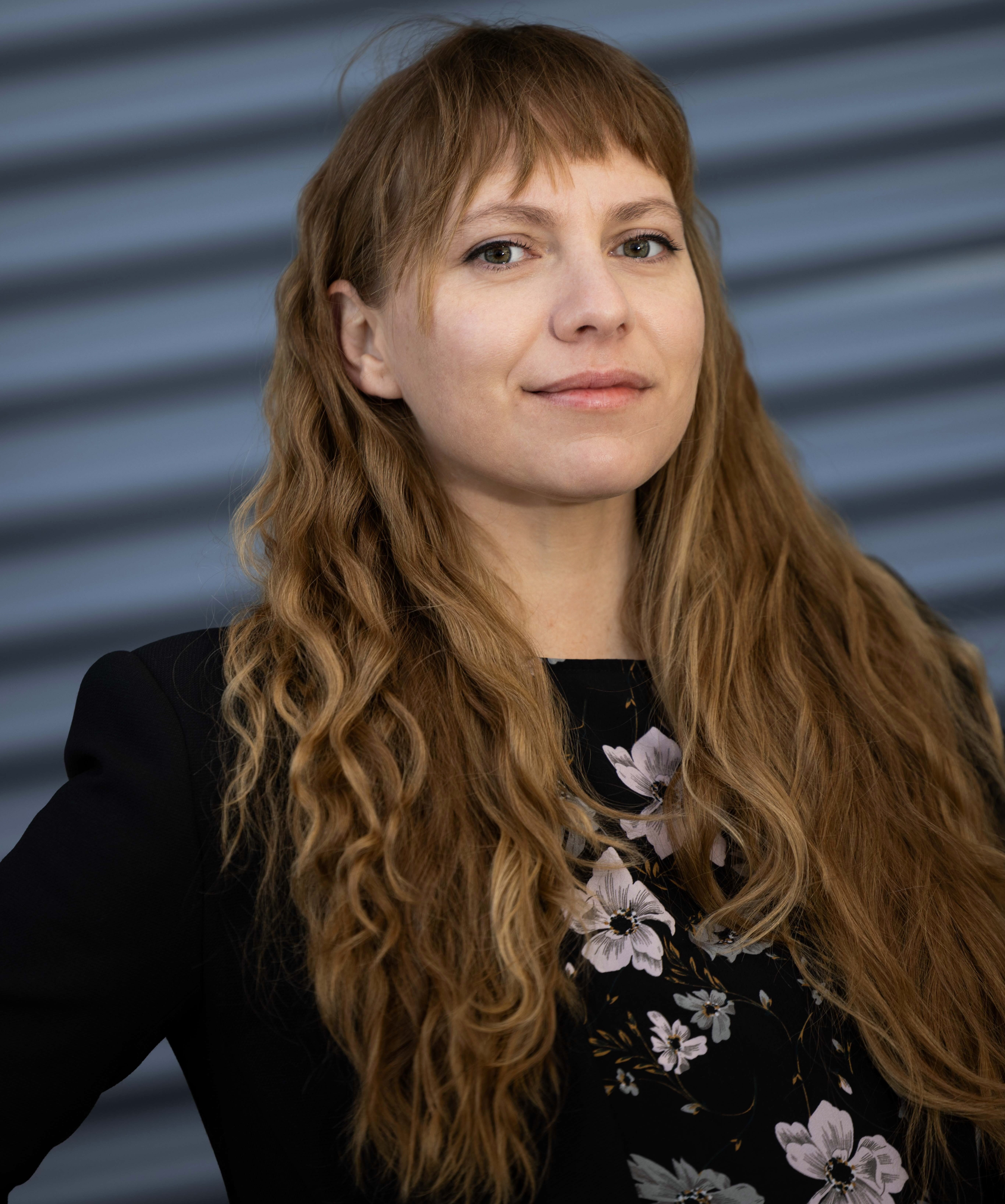
Research in the DSB encompasses an array of topics including genome structure and function, antibiotic function and resistance, mechanisms of cell death, metabolism, gene expression regulation, host-microbial-drug interactions and pathogenesis, chromosomal aberrations, cancer etiology and cellular survival and adaptation under harsh conditions all studied at the systems level. Researchers use both experimental (molecular biology, genomics, imaging…) as well as computational approaches (quantitative modeling, AI, bioinformatics…) to study these processes in a variety of model organisms and cell types. All research programs integrate high-throughput experimentation and quantitative data analyses to study how biological systems behave, respond, adapt and evolve in both natural and disease states. An overlap of interests as well as complementary expertise fosters a strong collaborative environment.
Faculty

Marian Walhout, PhD
Department of Systems Biology Chair, Maroun Semaan Chair in Biomedical Research, Professor Department of Systems Biology, Professor Program in Molecular Medicine
Understanding the Interplay between Gene Regulatory and Metabolic Networks We use a variety of experimental and computational systems biology approaches to map and characterize gene regulatory networks and to understand how regulatory circuitry controls animal development, function, and homeostasis. Ultimately, we aim to understand how dysfunctional networks affect or cause diseases like diabetes, obesity and cancer.
Job Dekker, PhD
Joseph J. Byrne Chair in Biomedical Research, Professor Department of Systems Biology, Professor Biochemistry & Molecular Biotechnology, Investigator Howard Hughes Medical Institute
Molecular and biophysical mechanisms of chromosome folding We are interested in understanding the folding of genomes in three dimensions, and the molecular machines that fold chromosomes. The lab combines molecular biology, genetics, biochemistry, genomics, computational approaches, and polymer physics to study how genomes fold and function in a range of organisms. Our work has led to insights into the formation of chromatin loops involved in long-range gene regulation, the organization of the interphase nucleus, the structure of metaphase chromosomes, and general folding principles of genomes. Recently, we have started exploring chromosome folding mechanisms in organisms with unusual genome organizations, such as dinoflagellates
Daniel Bondeson, PhD
Assistant Professor, Department of Systems Biology
Mechanisms for nutrient homeostasis in health and disease Cells must carefully regulate and balance the many nutrients required for growth, proliferation, and tissue-specific functions, all while adapting to changing environments. This 'homeostasis' often consists of interconnected transcriptional, metabolic, and post-translational mechanisms. My research focuses on how these mechanisms are integrated in normal physiology and how they are dysregulated in disease. Our primary focus is on studying the homeostasis of inorganic phosphate. This crucial nutrient is dramatically dysregulated in certain cancers – particularly ovarian cancer -- opening up potential therapeutic avenues while also revealing key gaps in our understanding of the cellular regulation of phosphate. We use chemical biology and functional genomics to identify and interrogate these cellular mechanisms.
Robert C. Brewster, PhD
Associate Professor, Department of Systems Biology and Department of Microbiology and Physiological Systems
Dissecting and Understanding the Implications of Resource Sharing to Cellular Decision Making My group studies transcriptional regulation in bacteria through a combination of theory, using molecularly detailed statistical mechanics models to produce quantitative predictions, and the tools of modern synthetic biology to design and test these predictions using a wide range of microscopy techniques. In particular, I am interested in understanding how the interconnected environment of the cell, where most regulatory players (transcription factor proteins, regulatory RNAs, etc.) act on dozens or even hundreds of different genes, can influence the special and temporal patterns of gene expression

Johan Gibcus, PhD
Assistant Professor, Dekker Lab
Spatial Organization of Genomes We study how a genome is organized in three dimensions inside the nucleus. The spatial organization of a genome plays important roles in regulation of genes and maintenance of genome stability. Many diseases, including cancer, are characterized by alterations in the spatial organization of the genome. How genomes are organized in three dimensions, and how this affects gene expression is poorly understood. To address this issue, we study the genomes of human and yeast, using a set of powerful molecular and genomic tools that we developed
Michael J. Lee, PhD
Vice Chair - Department of Systems Biology, Associate Professor, Department of Systems Biology, Program in Molecular Medicine, and Department of Molecular Cell and Cancer Biology
Systems Pharmacology of Anti-Cancer Therapies Our interests exist within an emerging discipline called Systems Pharmacology, which is focused broadly on understanding principles in drug therapy and mechanisms underlying the therapeutic activity of drugs as well as complex drug combinations. Towards this end, our group uses a combination of experimental and computational approaches to study the organization and function of signaling networks controlling the growth, survival, and death of cancer cells. We are particularly interested in understanding the adaptive properties that cells engage when faced with anti-cancer drugs, as well as identifying genetic, non-genetic, and contextual factors that contribute to the therapeutic variability seen in cancer patients.
Amir Mitchell
Associate Professor, Department of Systems Biology and Program in Molecular Medicine, Department of Biochemistry and Molecular Biotechnology
Untangling Host-Drug-Microbiome interactions - from core principles to emergent properties Cells in natural habitats operate in complex and dynamic environments that feature numerous interactions between multiple active and passive members (organisms, cell types, and molecules). Understanding how such complex systems operate and predicting their emergent properties are formidable challenges. Our lab studies how cells decode, respond, and adapt to external stimuli in the context of multi-lateral host-drug-microbiome interactions such as in the tumor-microbiome. We address this complexity challenge by reconstituting multi-member systems with varying levels of complexity from individual parts that are well-understood on their own (model organisms, clonal cell-lines, drugs, and metabolites). This bottom-up approach allows us to investigate the unique properties that emerge in complex systems using tractable host-drug-microbiome models. Our experimental work leverages on genomics, transcriptomics, and quantitative high-throughput microscopy and is complemented by computational approaches and mathematical modeling.
Elizabeth Shank
Associate Professor, Department of Systems Biology and Department of Microbiology and Physiological Systems
The Shank laboratory studies the chemical and physical interactions of microbes with each other and their hosts Microbes live everywhere, and their community activities can have profound impacts on their hosts as well as on ecosystem‐level processes. Our group is focused on dissecting microbial cell-cell interactions to understand how secreted specialized (or secondary) metabolites contribute to the establishment, dynamics, and stability of these microbial communities. We use traditional microbiology, fluorescent co-culture, bioinformatics, mass spectrometry imaging, and native-like microcosms to identify and dissect chemical signaling interactions between microbes in both natural and laboratory settings, with the long-term goal of rationally manipulating microbial communities to improve host health and the environment.

Jolanda Van Leeuwen, PhD
Associate Professor, Department of Systems Biology
Understanding genetic resilience Sometimes people can be healthy despite carrying mutations that have been directly associated with severe, early-onset Mendelian diseases, such as cystic fibrosis. A plausible explanation is that these resilient individuals carry suppressor mutations in their genomes that can compensate for the detrimental effects of the disease mutation. However, it is not trivial to identify suppressor mutations among the millions of variants present in a genome. In our research, we use high-throughput screening approaches in the budding yeast and cultured human cells to systematically identify genetic suppressors. By mapping thousands of suppressor mutations, we aim to decipher the general principles underlying genetic suppression and use these to find and predict suppressors for genetic diseases. Because suppressors highlight mechanisms of biological resilience, identifying them may lead to the development of new strategies for therapeutic intervention.
Emma V. Watson, PhD
Assistant Professor, Department of Systems Biology
Cancer Chromosome Genetics What are the functional consequences of chromosomal abnormalities in cancer? Over 90% of tumors are aneuploid, with ploidy ranges from sub-2N to more than 4N. Moreover, tumor-associated chromosomal abnormalities are tissue-specific and often highly recurrent. For instance, over 60% of breast cancers have an extra copy of chr 1q. We use forward genetics to select isogenic aneuploid mutants with tumor-like chromosomes from diploid epithelial cell precursors based on their proliferative advantage. Multi-omics profiling of these cells provides a deeper understanding of the roles of cancer chromosomal aberrations. Our ultimate goal is to develop therapeutic interventions to target cells with chromosomal abnormalities and kill tumors.
Hyun Youk, PhD
Associate Professor, Department of Systems Biology and Program in Molecular Medicine
Transitions Between Being Alive and Being Truly or Seemingly Dead We are interested in identifying and studying the ways in which a cell or an organism transitions between being alive and being either truly or seemingly dead (e.g., dormancy). We hope to find common principles that underlie these transitions. We are particularly interested in principles that allow life to be restarted after it has nearly or completely ceased, as in the case of dormant spores in yeast and diapaused mouse embryos. Our studies can deepen our understanding of quiescent and senescent cells which, in turn, are important for understanding human diseases such as cancer and how and why organisms age. We use quantitative experiments that range from single-cell-level measurements on microscopes to transcriptome analyses.
Lutfu Yilmaz, PhD
Associate Professor in the Walhout Lab
Metabolic Network Modeling with the Nematode C. elegans We aim to develop a systems-level understanding of how animal metabolism converts nutrients into biomass, energy, and by-products. Specifically, we have reconstructed a metabolic network model of the nematode C. elegans, which allows flux balance analysis to explore how the network of annotated biochemical reactions in this organism work altogether as a whole system. We integrate this mathematical model with gene expression datasets to resolve metabolic function under tissue-specific contexts and other defined conditions.
Walhout Lab Website ››
Affiliated Faculty |

Nezar Abdennur, PhD
Assistant Professor, Department of Genomics and Computational Biology
Dynamics and function of genome-organizing processes
We’re an interdisciplinary computational group solving challenges of multi-omic data science in biology and medicine. We have a strong interest in problems concerning the spatial and functional organization of the human genome and their interplay in determining outcomes such as differentiation, aging, and disease. For example, during interphase, mammalian genomes appear to be organized by at least two independent processes that are currently under intense study: an ATP-consuming loop extrusion process by cohesin motor complexes acting along chromosomes, and a global phase separation process that depends on chromatin state. Both processes are thought to serve critical roles in gene regulation and cell decision making, but little is currently understood. By applying integrative analysis, visualization, modeling, and method development to massive datasets, our goal is to decipher the details of the states and processes that act upon chromatin and how they influence cell fate.

Jennifer Benanti, PhD
Professor, Molecular, Cell & Cancer Biology
Regulation of Cell Growth and Division
Misregulation of cell division is the underlying cause of a number of human diseases, including cancer. Our lab is interested in understanding the molecular mechanisms that control how cells grow and divide. We study how protein degradation by the ubiquitin-proteasome system controls both the cell cycle and metabolic transitions.

Thomas Fazzio, PhD
Professor, Molecular, Cell & Cancer Biology
Regulation of gene expression and cell fate by chromatin structure
We are focused on two problems central to gene regulation and development: (1) What are the pathways and mechanisms by which chromatin structure modulates gene regulatory networks? (2) How is chromatin structure remodeled during cellular differentiation to promote cell fate changes? We take a range of approaches to address these problems, largely in mouse embryonic stem cells and mouse models.

William Flavahan, PhD
Assistant Professor, Molecular, Cell & Cancer Biology
Defects in Chromatin Biology and Topology as Drivers of Cancer
Research in the Flavahan lab focuses on how defects in the molecular structure of the genome, called chromatin, can affect the expression of cancer related genes. These defects, including changes in repressive histone marks and the three dimensional structure of the genome, can activate genetically intact oncogenes and lead to tumorigenesis. By understanding these epigenetic mechanisms, we hope to uncover therapeutic vulnerabilities that can lead to advances in patient care.

Manuel Garber, PhD
Professor Bioinformatics & Integrative Biology
The Functional Genome
The functional characterization of genomic elements using genome-wide functional assays such as RNA-Seq and ChIP-Seq. Our methods have been critical to the discovery and characterization of a novel set of large intergenic non-coding RNAs (lincRNAs) and to our understanding of the immune transcriptional response to pathogens. To study lincRNAs and in particular their evolutionary history, as well as the systematic dissection of the transcriptional regulation of the immune response.

Athma Pai, PhD
Assistant Professor, RNA Therapeutics Institute
Kinetics of Gene Regulation
Our lab lies at the intersection of RNA biology, computational genomics, and systems biology. Our central goal is to understand the dynamic nature of gene regulation in eukaryotic systems, by dissecting the kinetics of mRNA biogenesis and maturation. Specifically, we study the speed and efficiency at which RNA molecules are created and processed to ensure proper cellular functions. To do so, we combine high-dimensional computational analyses with novel functional genomics approaches to address both fundamental mechanistic questions and predict cellular responses across changing environmental contexts.

William Theurkauf, PhD
Professor, Program in Molecular Medicine
Genome Integrity and Germline Development
Work in the lab addresses RNA localization and embryonic patterning, the response of mitotic cells to DNA damage, and small RNA function in germline development. Studies combine high resolution imaging, genetic, and molecular approaches in Drosophila and mammalian cultured cell systems.









